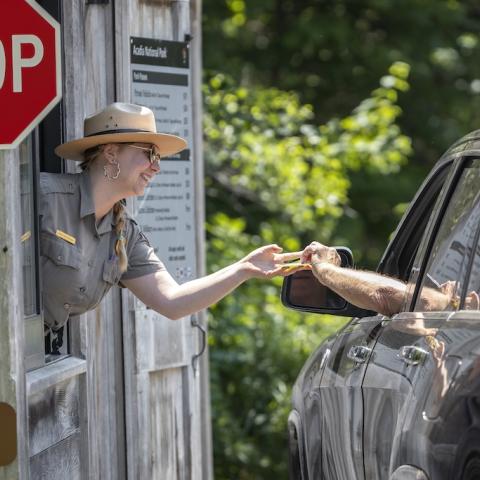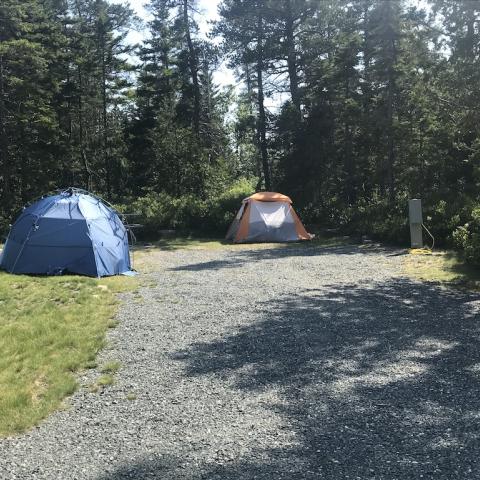
Spring in Acadia National Park means car-free roads for cyclists/Friends of Acadia
With habitats ranging from salt-water wetlands to high mountain summits, spring comes to Acadia National Park in a thousand ways.
Near sea level, perennials sprout fresh shoots through warming soils, while buds on maples and birches swell in anticipation of first leaf. Up high, hardy conifers and delicate wildflowers await their turn to shake off winter’s cold and revel in the warmth of the strengthening sun.
In addition to preparing to deal with summer’s throngs of visitors, Acadia staff is wrestling with what to do following some weather-related damage this past winter. In January, back-to-back 50-year rainstorms, combined with rapid melting of snowpack, resulted in the area around the Sieur de Monts Spring Nature Center, and the nearby Great Meadow, being inundated by more than two feet of water. Rapidly dropping temperature then turned that water into ice. Hundreds turned out to ice skate among the trees (See the video) and above hiking trails where rangers were actually paddling canoes just a few days before!
The joy of discovering something new in Acadia was tempered however, by the toll the ice and water took on both natural and human-made features.
The Nature Center and nearby restrooms were flooded. Ice took out anti-deer fencing at the Wild Gardens of Acadia. How the floods and ice will affect the delicate microhabitats created and nurtured by volunteers at the gardens remains to be seen.
Still, the traditional signs of spring returning to Acadia will soon be here. Endangered Peregrine Falcons usually return to the cliff-side scrapes to hatch their young in late March. Watch for possible trail closings used to minimize human activity near the nesting sites.
While the park no longer holds “Car Free” days on the paved Park Loop Road for half a Saturday, there are plenty of opportunities to enjoy those roads between the time the snow melts and vehicles are allowed. Although one lane along Ocean Drive is kept open year-round, the rest of the Park Loop Road, including the Cadillac Summit Road, isn’t slated to reopen until April 14 (weather permitting).

In spring you can find times when Acadia National Park's Loop Road is clear of both snow and traffic so you can pedal or ski...on roller skis!/Friends of Acadia
Also in spring, the groomed, gravel carriage roads may be closed for a week or so due to mud conditions. When the surface thaws, but the ground below is still frozen, water can’t percolate downward. Walkers, and especially bikers, can leave deep ruts and holes in smooth surface.
In addition to enjoying the outdoors in Acadia this season, you can also volunteer to help maintain the park’s trails and carriage roads through the efforts of the non-profit group Friends of Acadia. Find out more here.
To keep up on the latest news and happenings in Acadia, join Friends of Acadia, and receive the group’s three-times-per-year Journal.




 Support Essential Coverage of Essential Places
Support Essential Coverage of Essential Places






